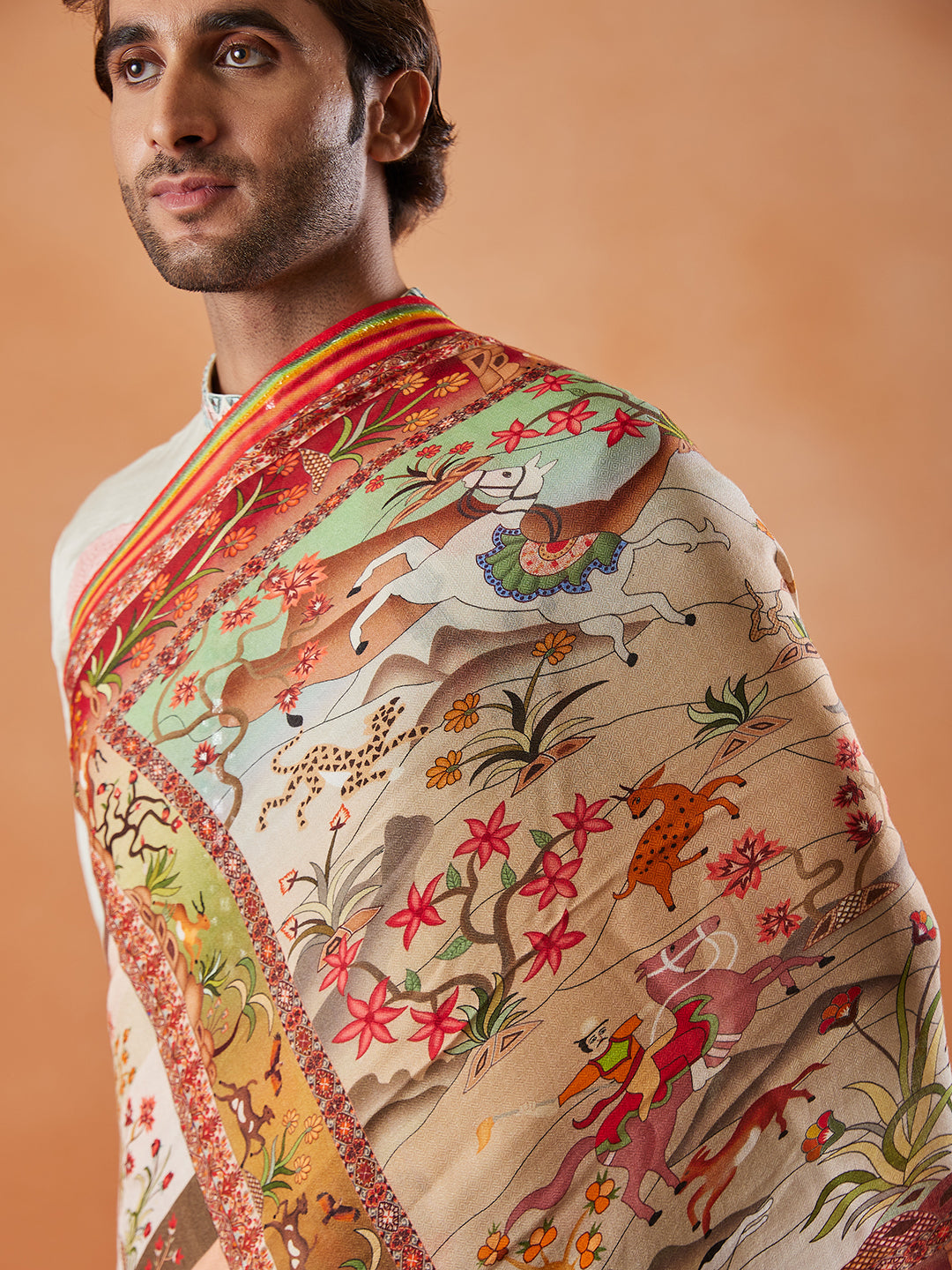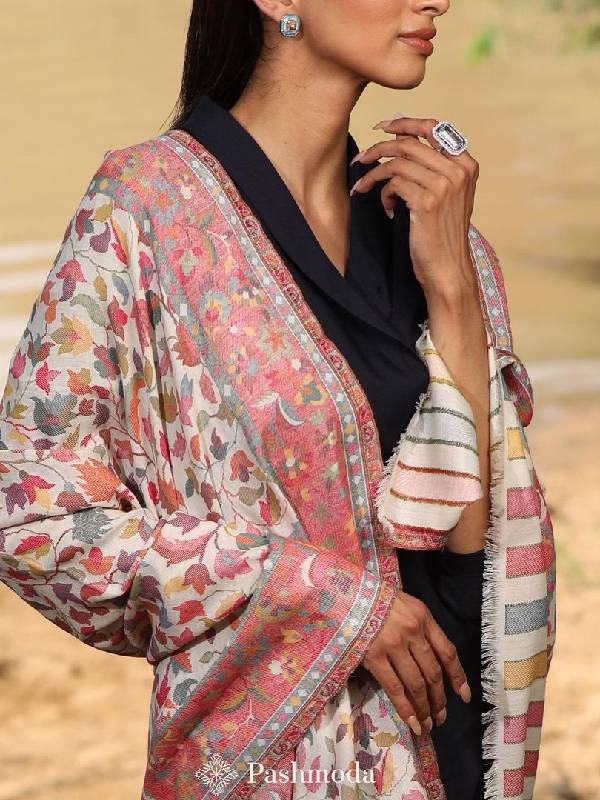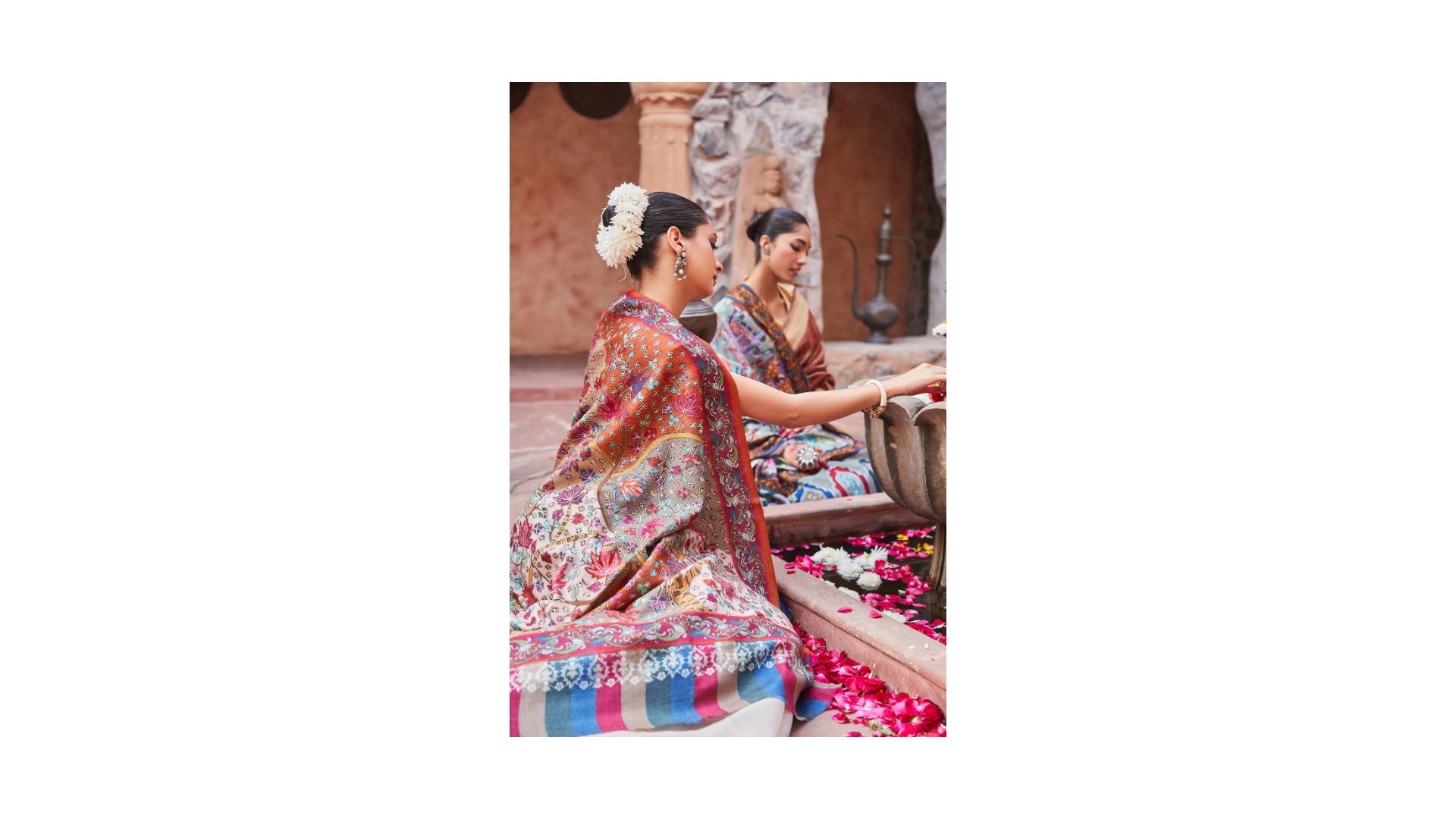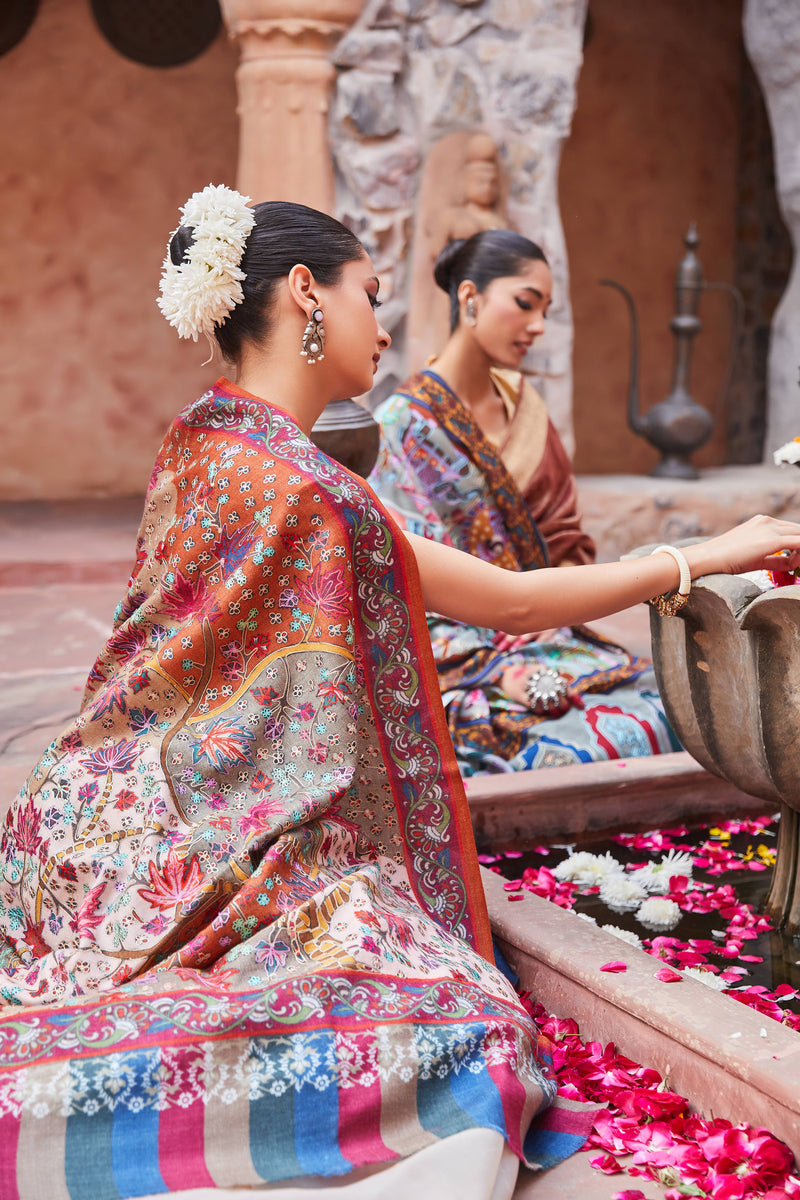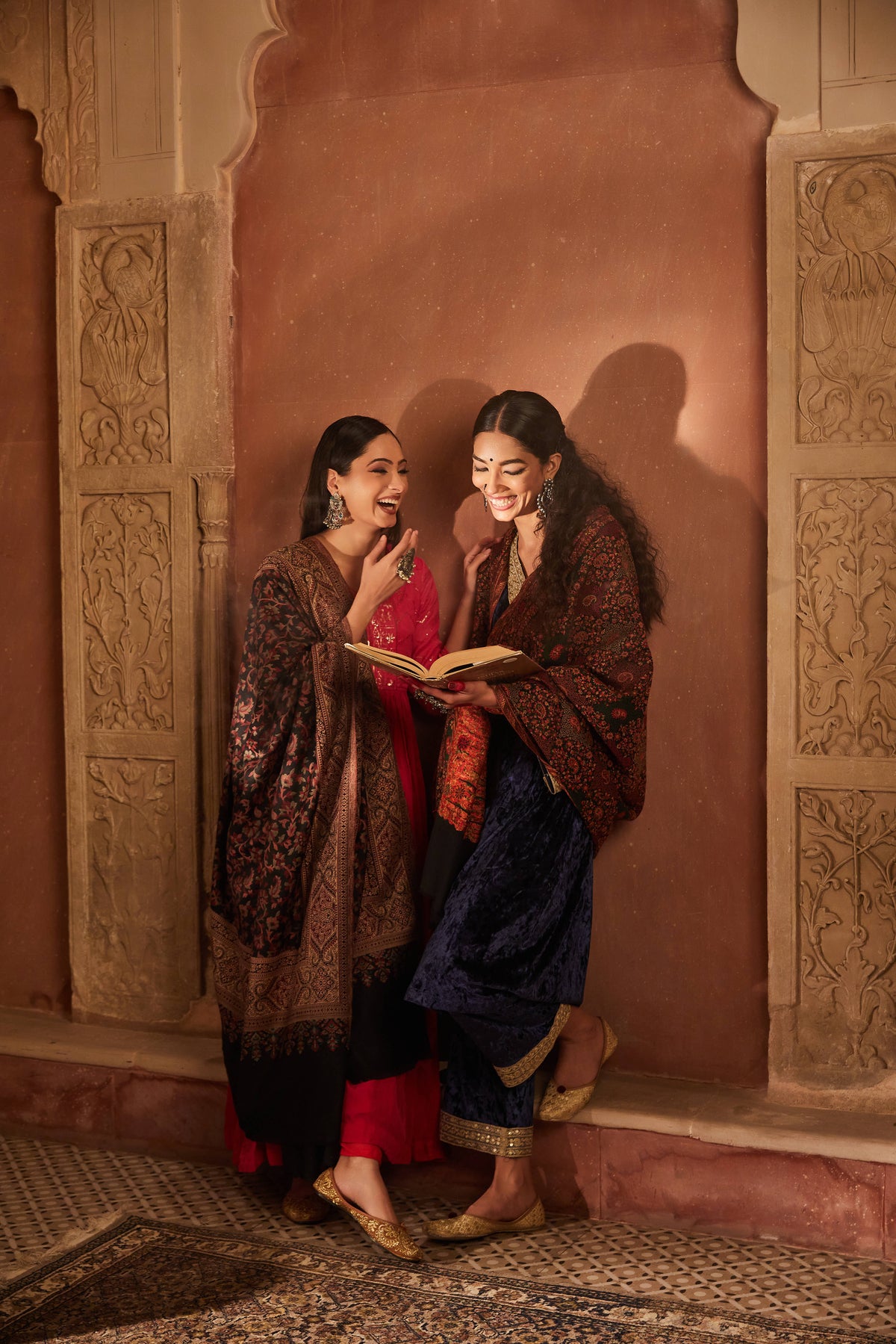
The Influence of Pashmina in Traditional Middle Eastern Attire
The Influence of Pashmina in Traditional Middle Eastern Attire
As a result of its historical origins and opulent texture, pashmina has always been an important part of traditional attire in the Middle East. From the Himalayas to cultural manifestations all across the Middle East, pashmina occupies a significant place in many people’s hearts and wardrobes.
Pashmina: A Staple in Middle Eastern Attire
In the Middle East, pashmina is not just an accessory; it is used as a sign of sophistication and elegance. Pashmina can be used as a shawl on the shoulder or be stitched into traditional wear, thus adding richness to an outfit like an abaya or thobe. It can also be worn formally or informally, making it one of these things that a Middle Eastern wardrobe must never miss. A pashmina shawl is not merely a fashion statement. It is an aspirational piece of clothing that is passed on through generations because of the cultural value it holds. A symbol of timeless elegance and a testament to rich artistry, Pashmina can easily be called a prized possession for someone who owns it.
Historical Significance of Pashmina:
Pashmina’s history dates back centuries and traces its roots to the Himalayan region of Kashmir. Initially treasured for its warmth and tenderness, pashmina became quickly associated with Middle Eastern royalty and aristocracy. Pashmina shawls gained popularity during the Mughal era, as mughals were known for their love for luxury textiles. They gave pashmina the status of a luxurious textile. Its reputation for quality and workmanship has stayed through time, establishing itself as “forever” luxurious.
Varieties of Pashmina in Traditional Dress
Pashmina comes in different forms under traditional Middle Eastern clothing; hence, one can find intricately woven shawls or finely embroidered stoles depending on the locality. Each region brings out a unique way to incorporate pashmina into their clothing or lifestyle; hence, we get to see various versions of pashmina in clothing. They can be exquisitely amplified by handmade floral motifs or different sorts of handmade patterns. They are found as shawls, wraps, ponchos, salwar kameez, sarees and kurtas, to name a few varieties. Pashmina is versatile and takes many forms, depending on the region it is being used in.

Pashmina's Role in Cultural Expressions
Pashmina is beautiful to look at, and that is known to all. But despite its aesthetic appeal, it holds a lot more significance in Middle Eastern culture. It is a symbol of heritage and identity since many families pass down pashminas as heirlooms that contain memories of generations with them. Similarly, it is also widely used in prayers as rugs or coverings, which gives it a divine meaning. It is also widely used in weddings, as the bride wears pashmina shawls, representing elegance, grace, and refinement. They hold cultural, historical and economic importance while also being a symbol of social wealth and sophistication.
Craftsmanship and Techniques in Pashmina Production
The production of pashmina is a labour-intensive process that demands skill, precision and patience. From the collection of superior cashmere wool to delicate weaving and needlework techniques, every phase of the manufacture is handled with meticulousness and precision. Every pashmina garment is a masterpiece, with the artisans employing traditional methods passed down from one generation to another over hundreds of years.
Pashmina in Contemporary Middle Eastern Fashion
Pashmina has its roots deep in tradition, but it has also modernised itself to suit contemporary fashion demands. Pashminas are often found paired with up-to-date clothes in Middle Eastern fashion today; consequently, there is a synthesis between old and new. In their collections, designers integrate pashminas into different garments by giving them a modern touch while at the same time respecting the traditions and craftsmanship aspects of this timeless cloth. Whether it is with the pashmina scarves and shawls, which are timeless and contemporary forever, or with the perfect pashmina wrap for modest fashion and layering in contemporary fashion,. They are ideal for both, as pashmina rarely has any weight and has a very delicate feel, making it a perfect cover-up. Similarly, in the Middle East, pashmina hijabs are a very trending take on the fabric, as they are a contemporary take on hijabs.
Pashmina as a Symbol of Elegance and Status
In this society, owning a pashmina signifies elegance, refinement and social status. It may be considered an item that has been handed down through generations as it holds special family significance, which symbolises culture and legacy. Pashmina can be worn casually or at formal events like parties; however, its presence enhances any outfit by simply adding sophistication and luxury in terms of agelessness.
Caring for and Preserving Pashmina

Proper care and maintenance are required for long-lasting pashmina garments. Pashmina should be kept away from sunlight in a cool, dry place in order to prevent fading and colour loss. Gentle handwashing with mild detergent is recommended, followed by air drying on a flat surface. Avoid using harsh chemicals or bleach, as they can weaken the fibres and cause discoloration. Similarly, it is advised to fold any pashmina item rather than hanging it. Pashmina should be kept in breathable areas and without a plastic bag since moisture can ruin it. While ironing, to take off the wrinkles from any pashmina clothing item, use steamers instead of iron to avoid sagging. With proper care, pashmina garments can be enjoyed for years to come, preserving their beauty and elegance for future generations.
Conclusion
All in all, pashmina remains an integral part of traditional Middle Eastern attire, representing elegance, a non-perishable heritage, and cultural identity. From its historical significance to its contemporary relevance in fashion, pashmina continues to captivate hearts and minds across the region. From the Mughal era to gracing French royalty, its journey is a testament to its rich cultural diversity and its immense allure. As a symbol of luxury and refinement, pashmina transcends time and trends, making it a timeless treasure cherished by generations past, present, and future. Pashminas will always hold a special place in Middle Eastern tradition, as they are more than just a piece of clothing for the people of this region; they have stories that have been passed down from generation to generation as a legacy.

